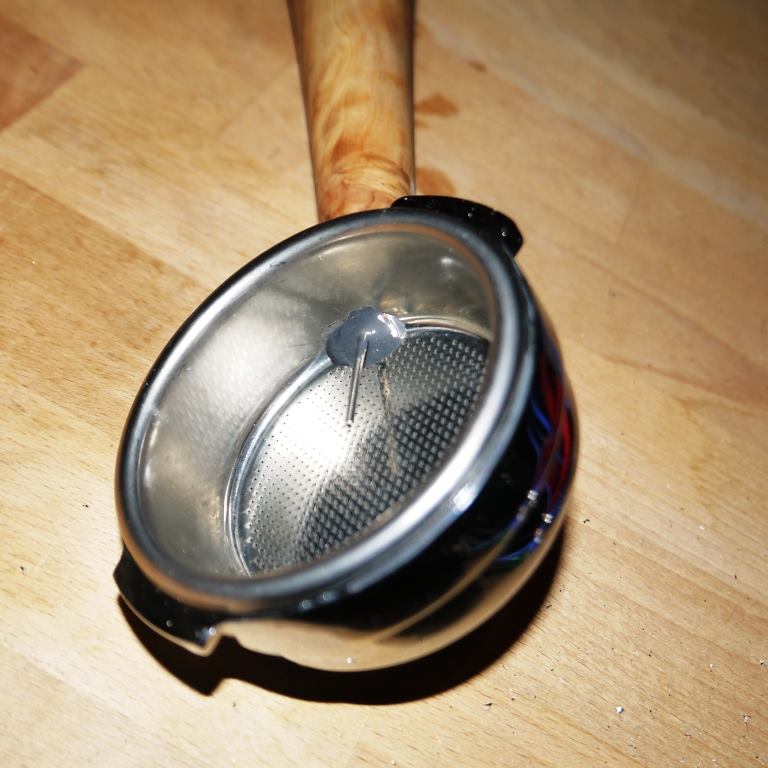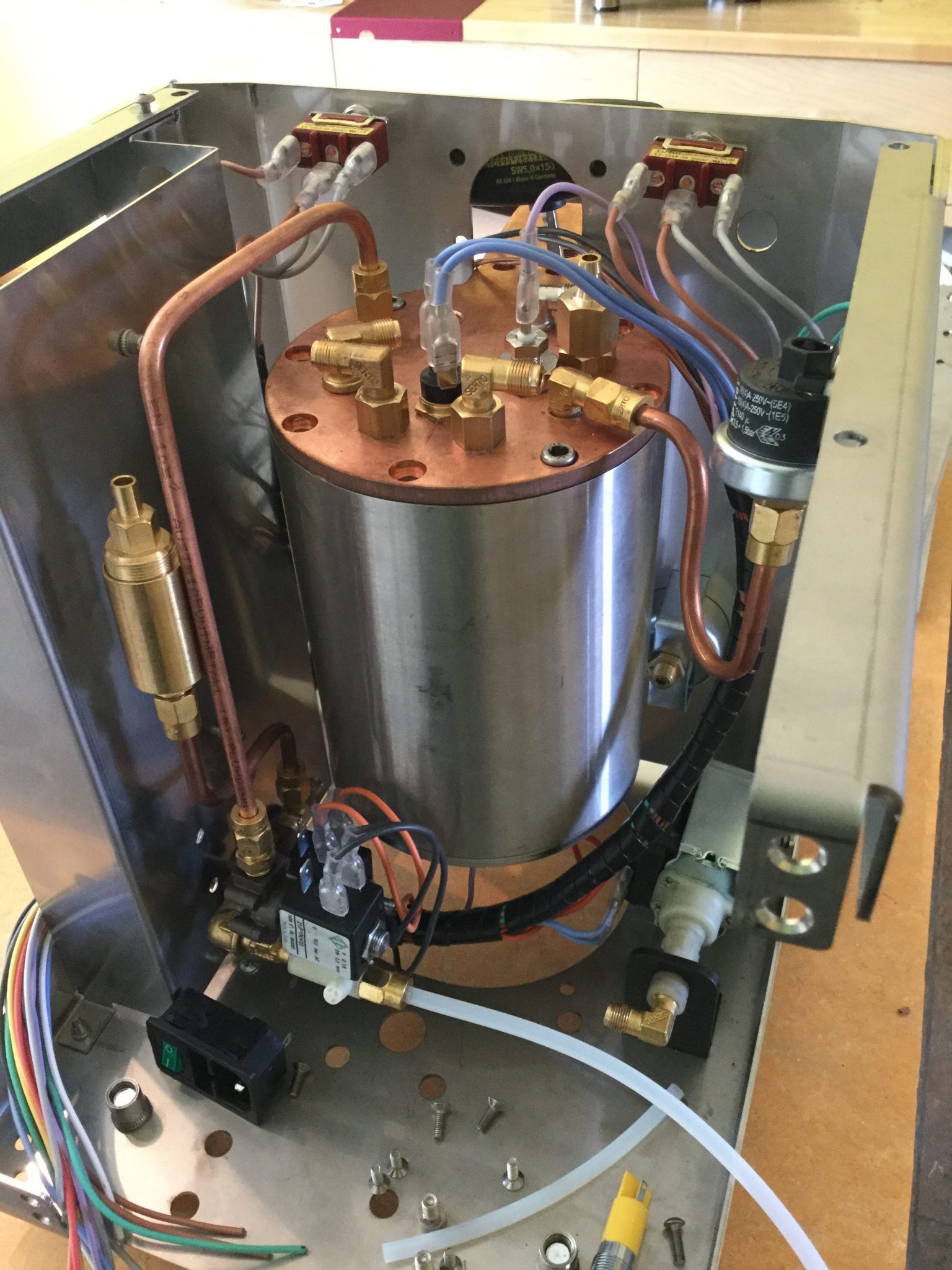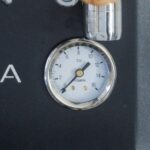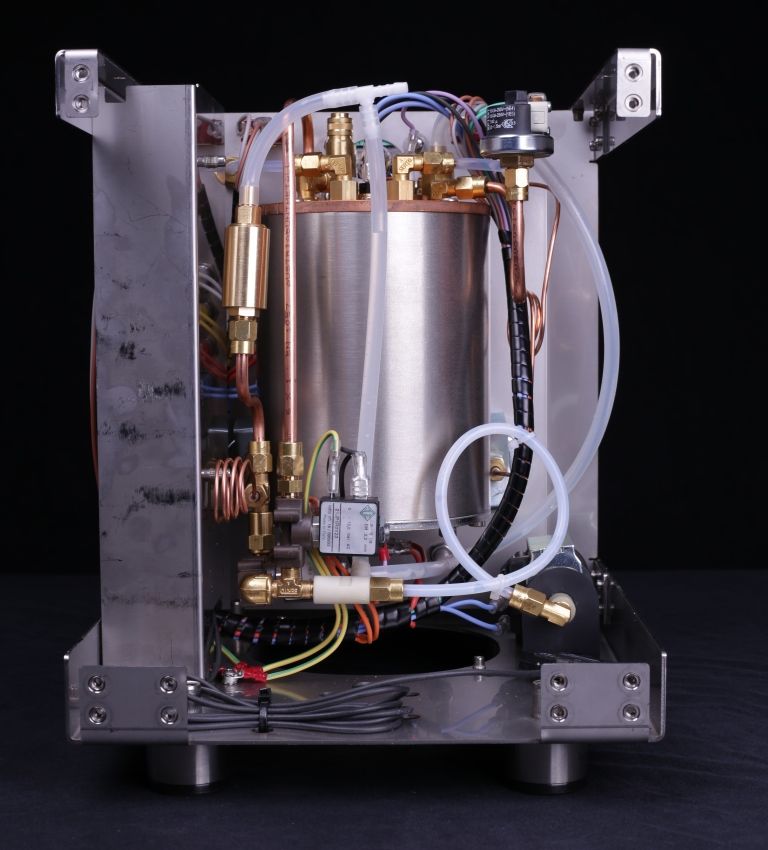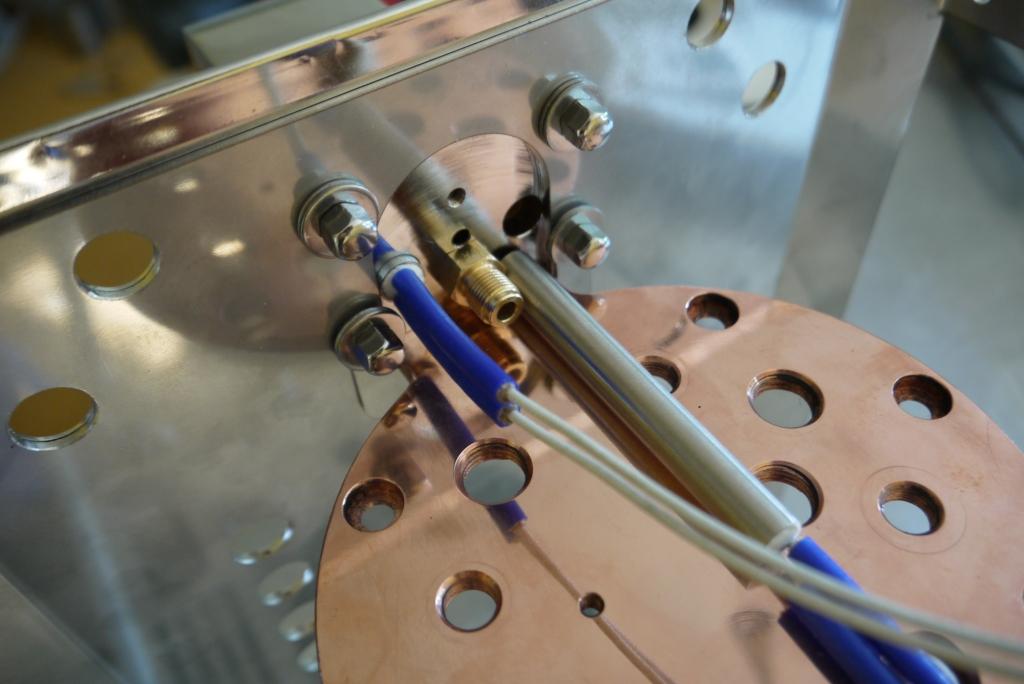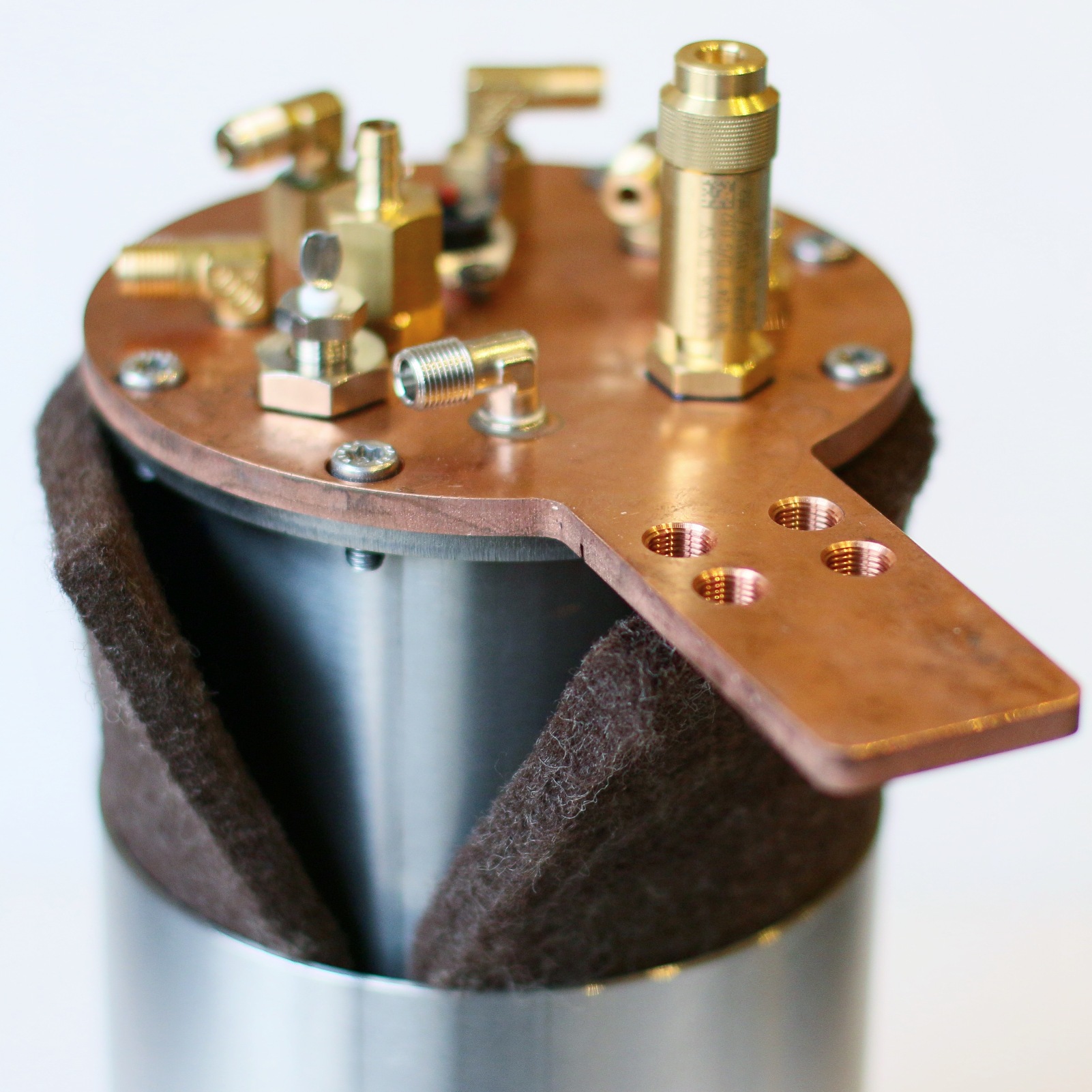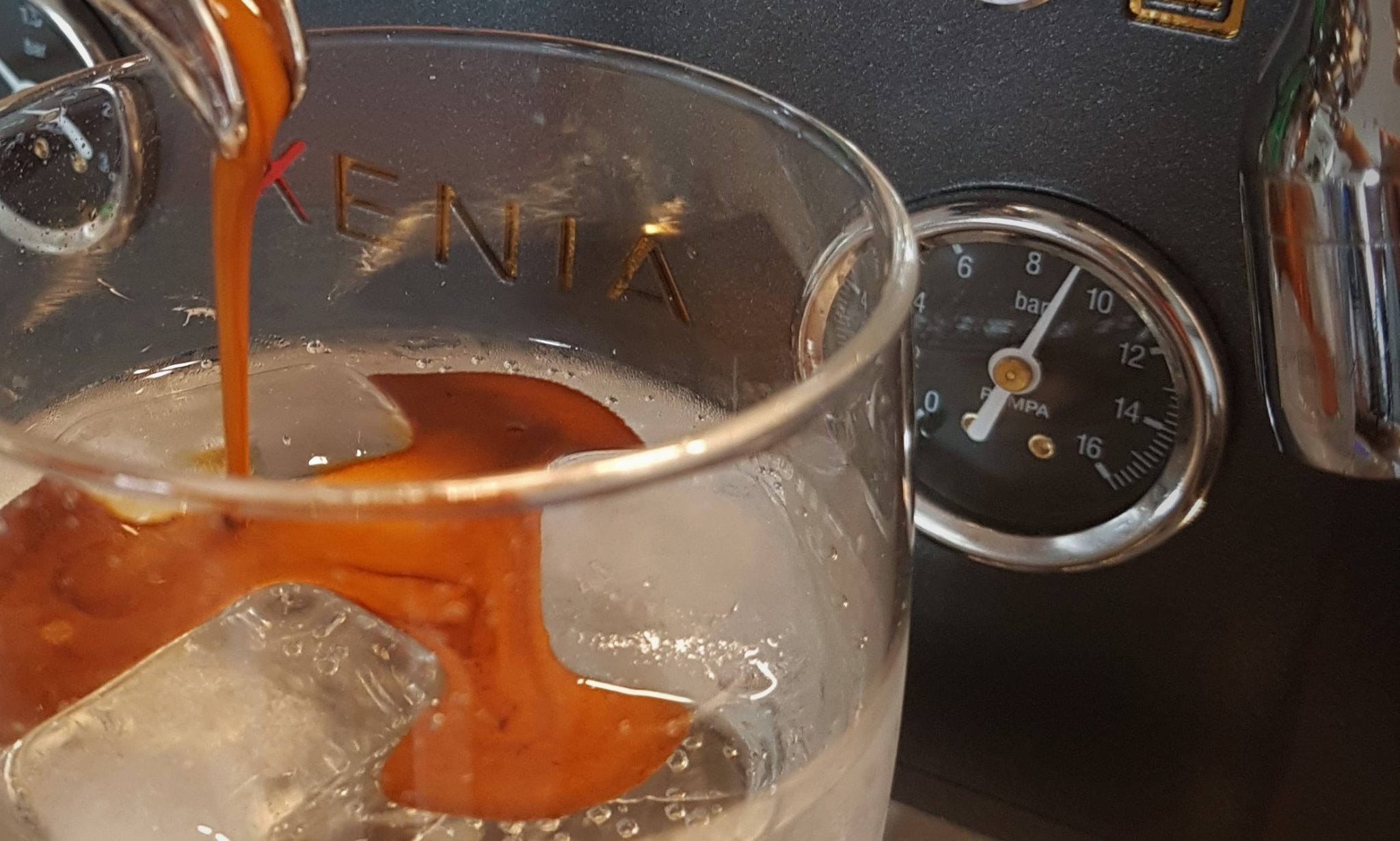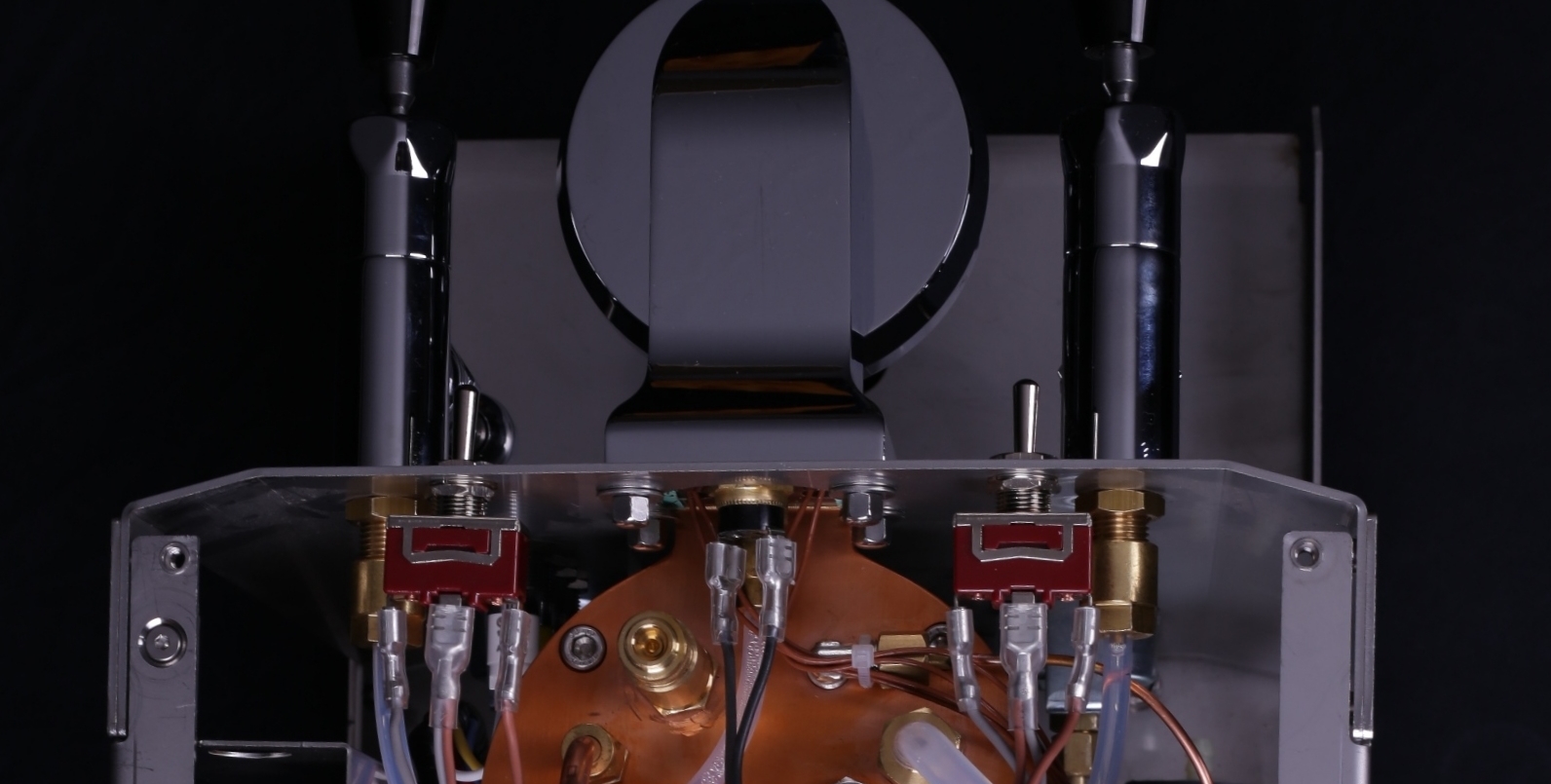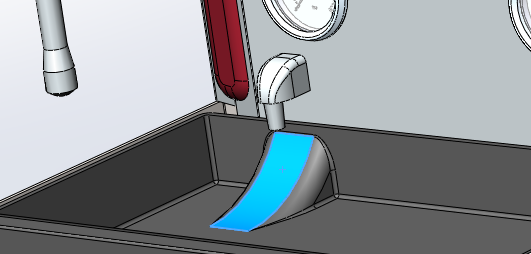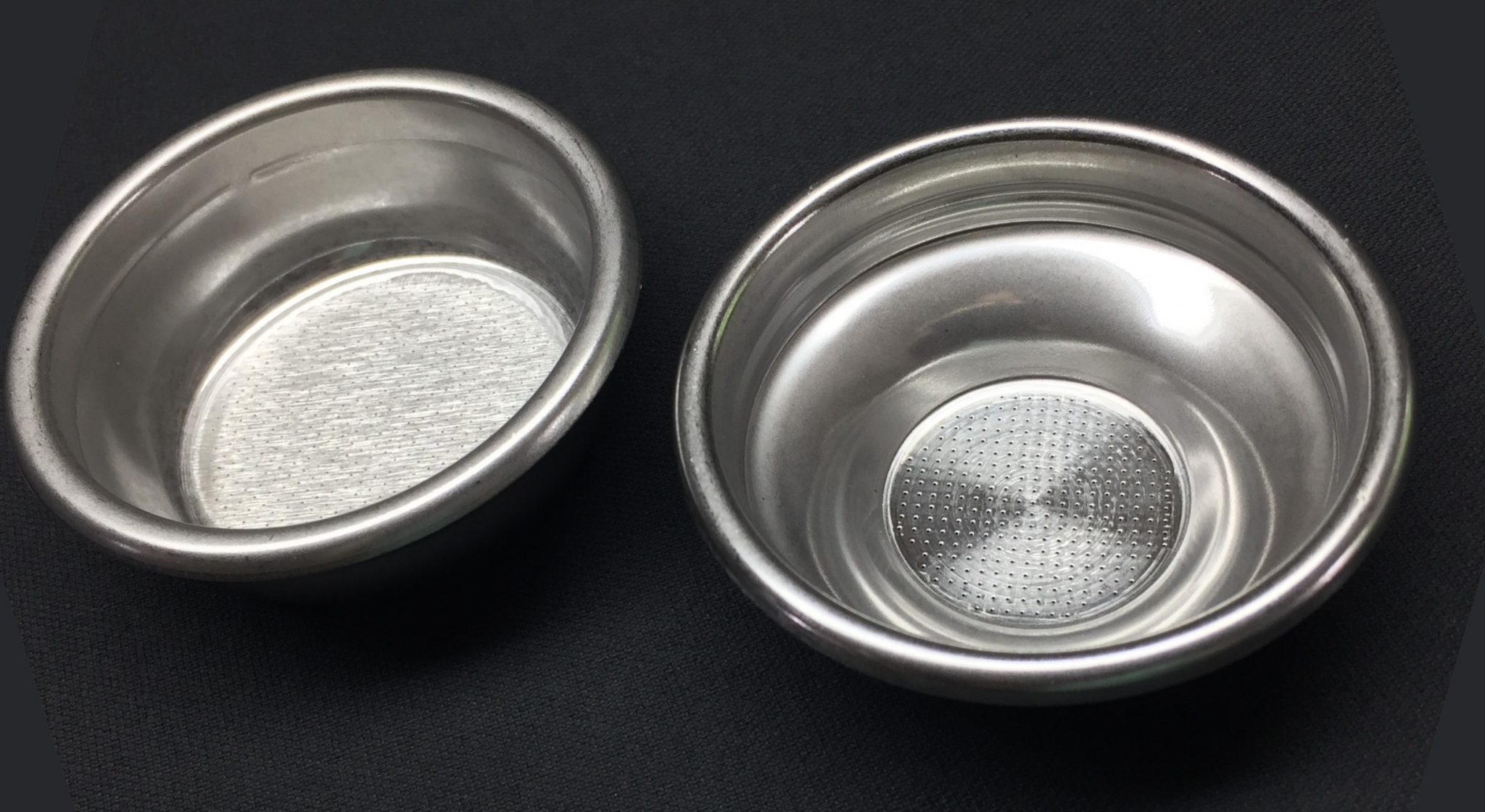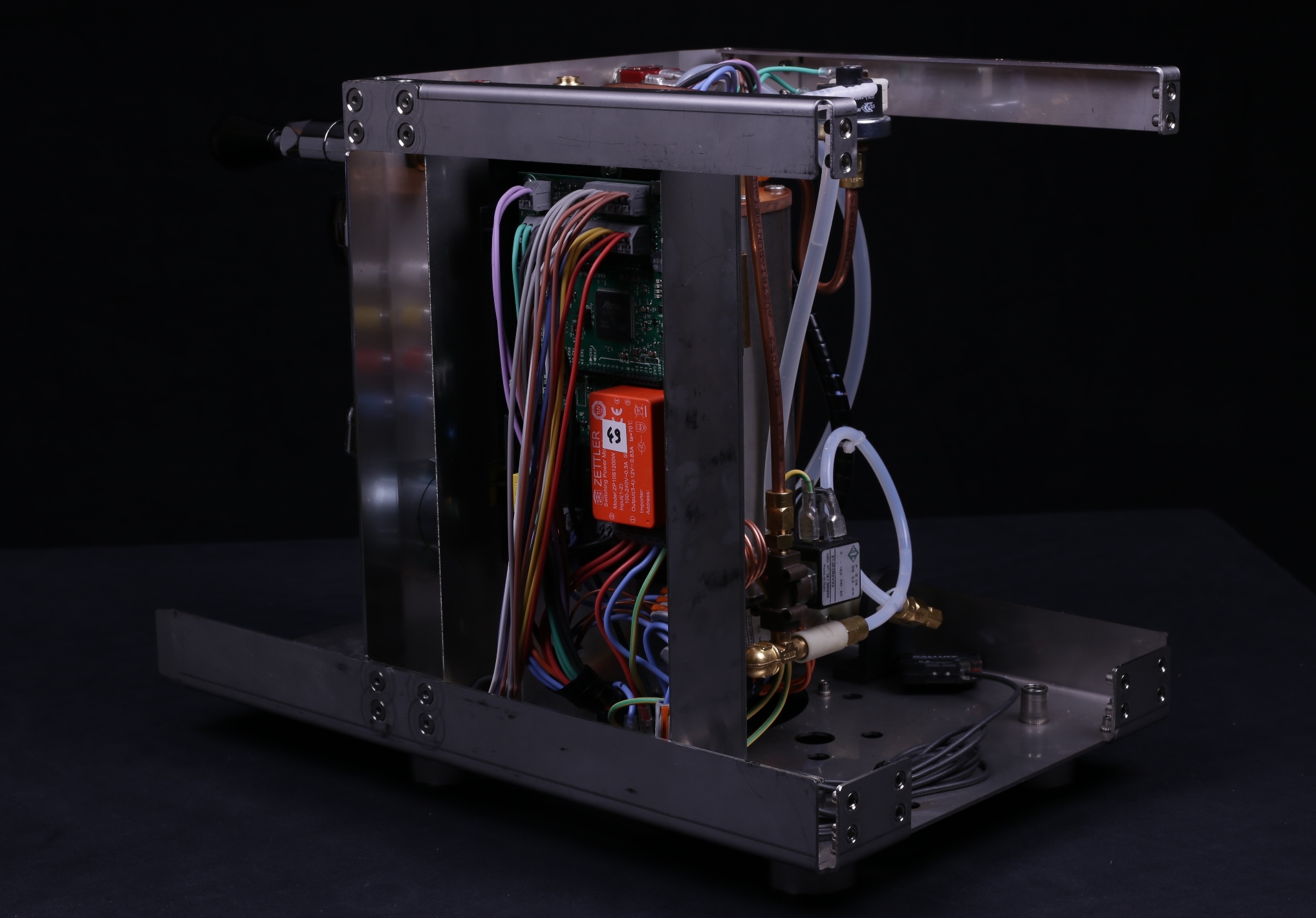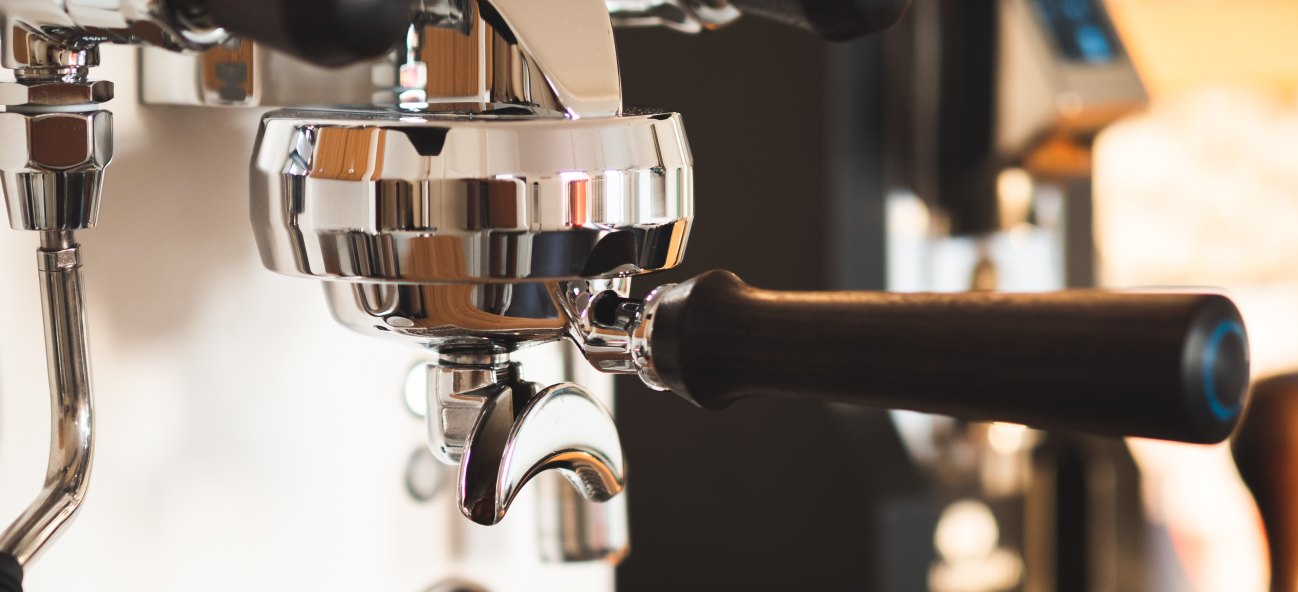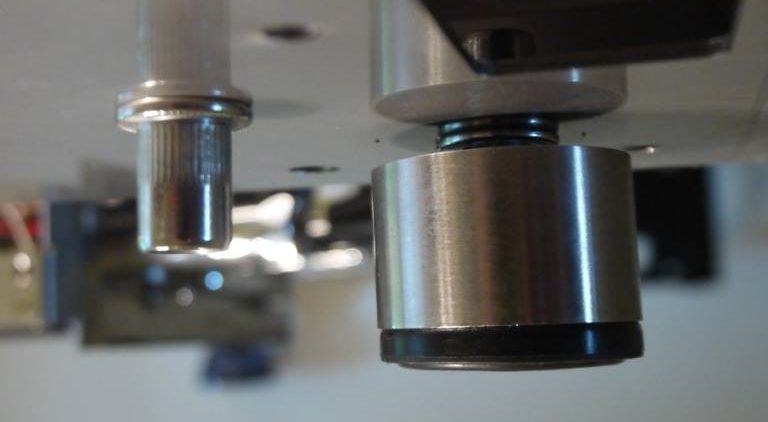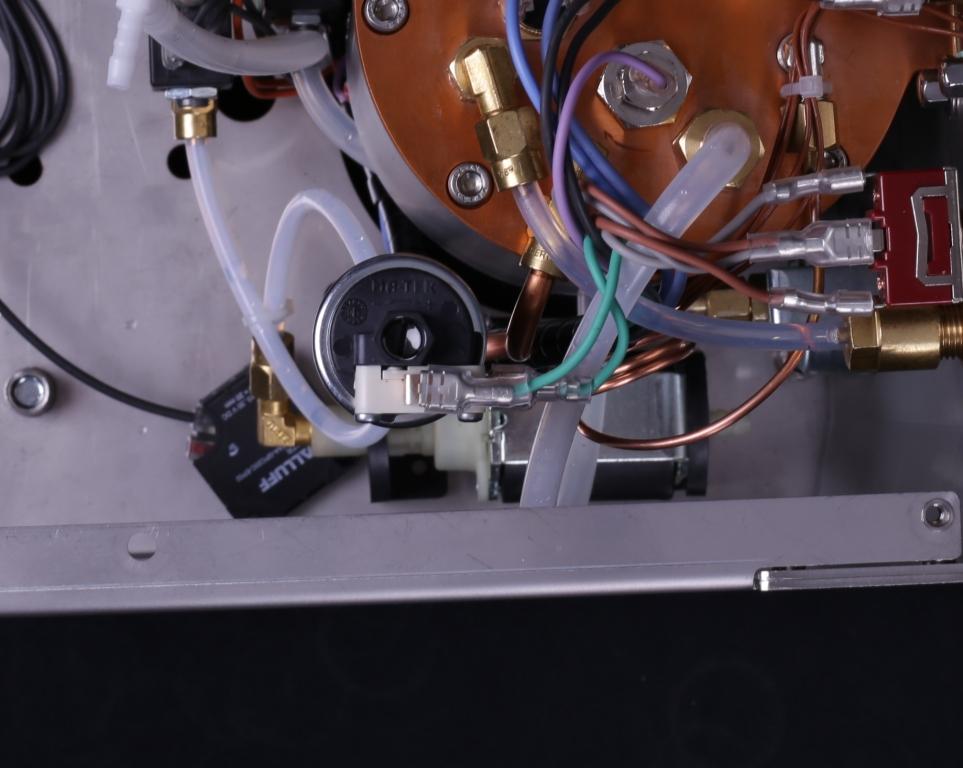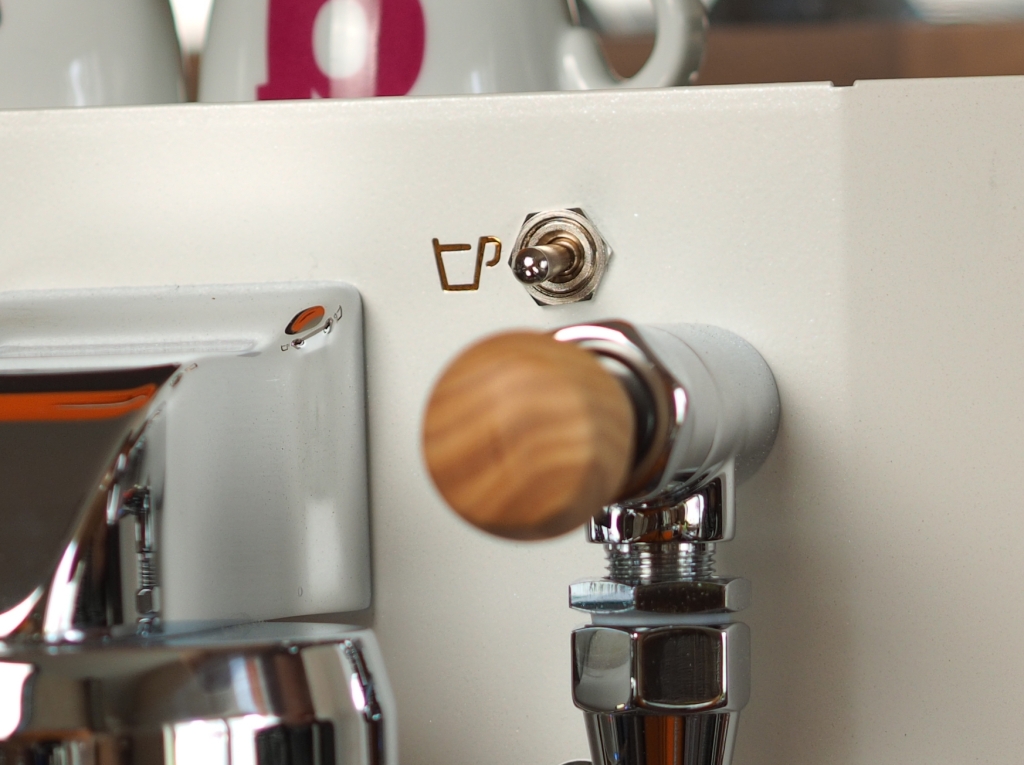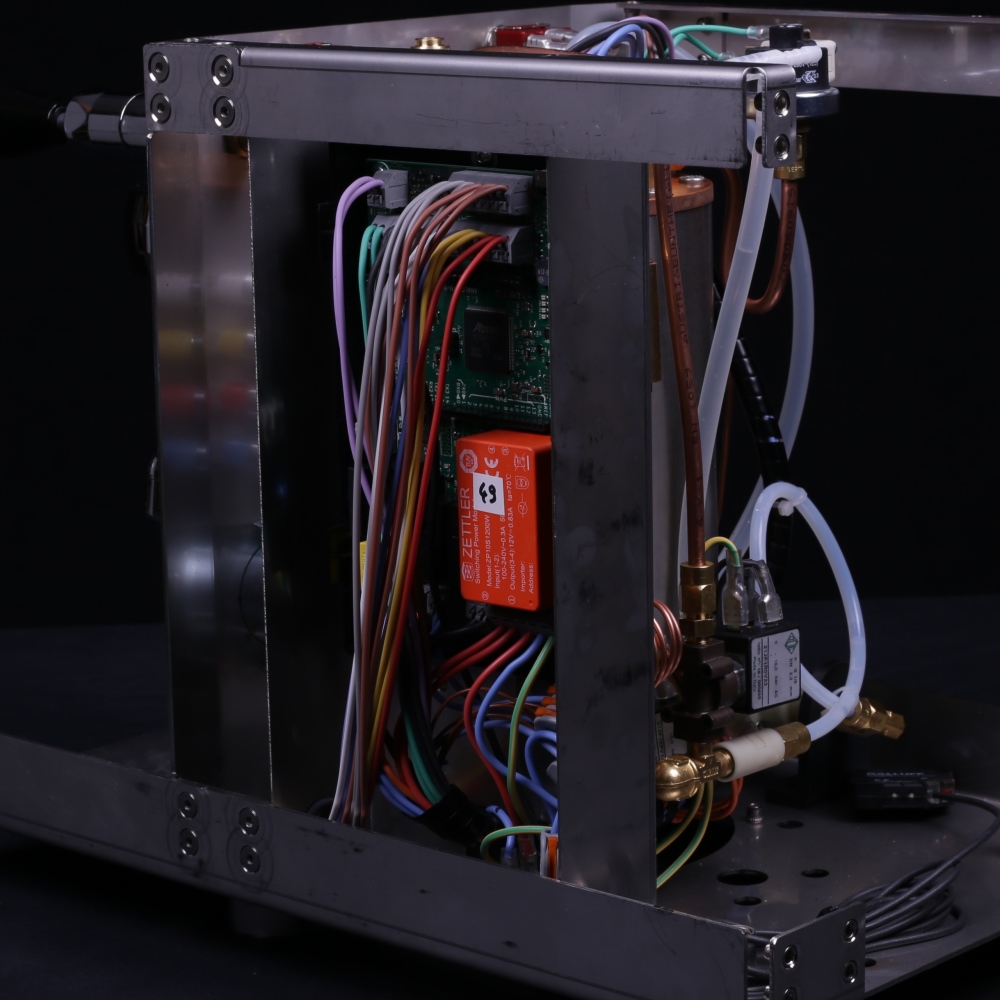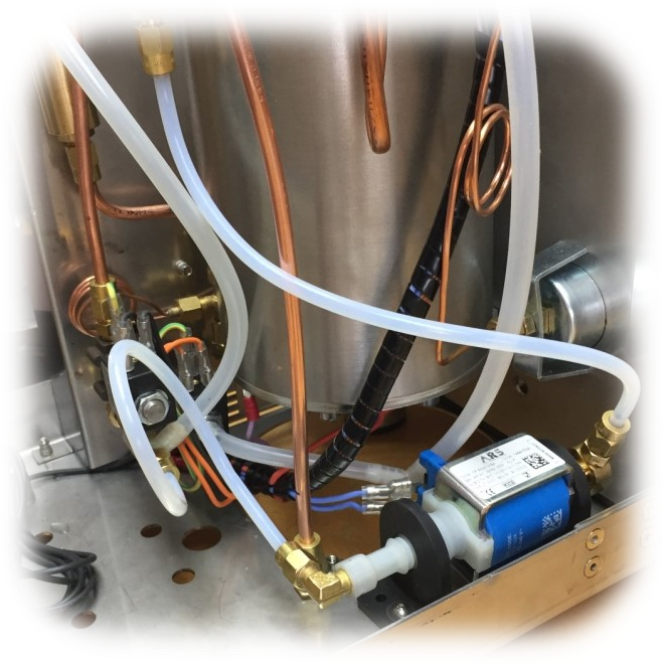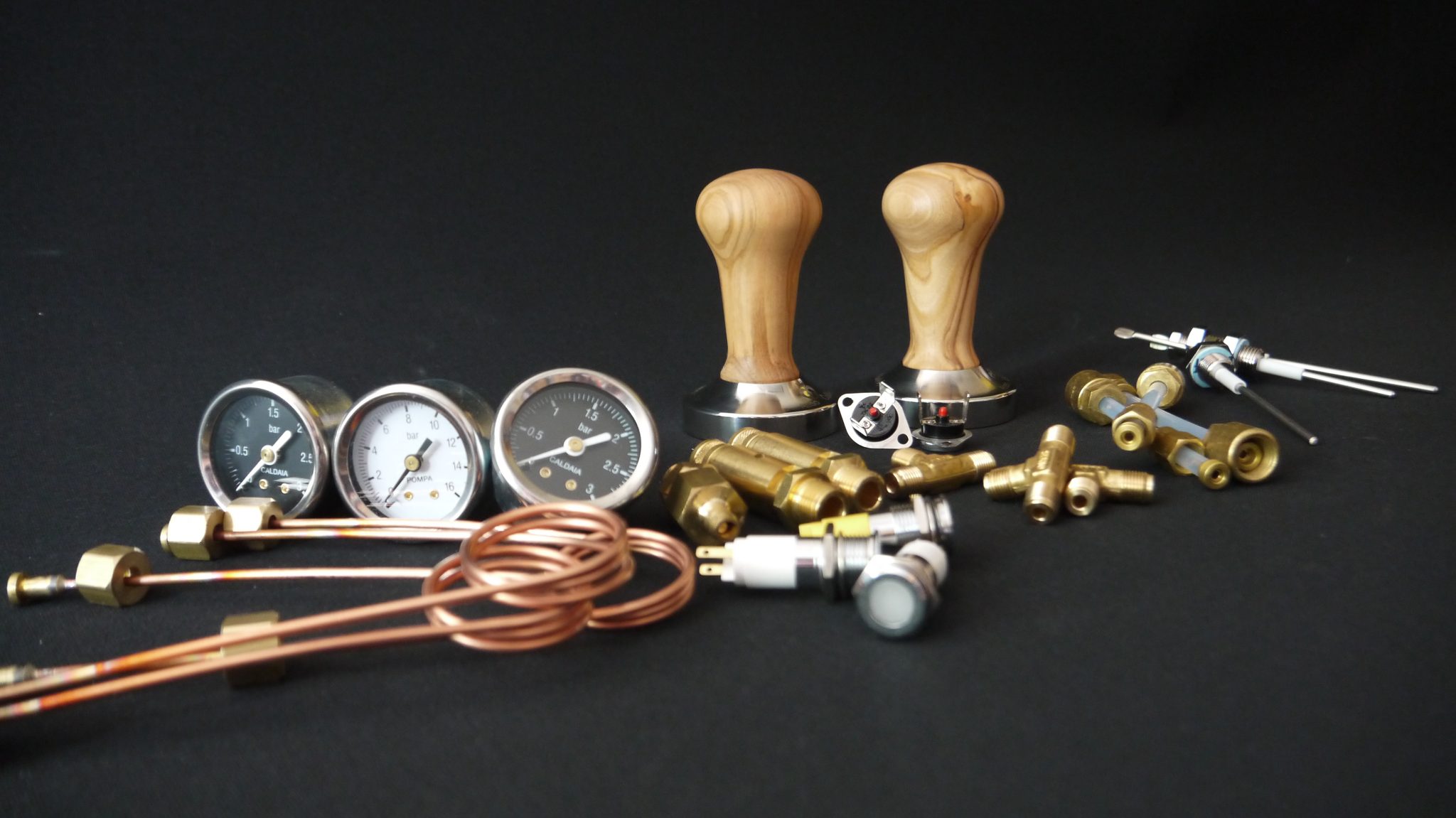The thermal bridge is a very central part of the Xenia's overall concept. It is made of copper (Cu-ETP) and connects and holds the brew group and boiler.
The brew group is thus thermally synchronised with the boiler and benefits from the very even heat generation of the boiler This means that the temperature supply is very even and the brew group only fluctuates within very narrow limits, even during long periods of operation.
Strictly speaking, the copper thermal bridge is an important reason for the good thermal suitability.
How evenly it works can be seen in this measurement curve (measured with a Scace measuring insert* on a prototype). Despite a very tight brewing sequence (one brew every minute), the brews are almost identical in the measurements. The machine does not reach its limits so quickly: even with intensive use.
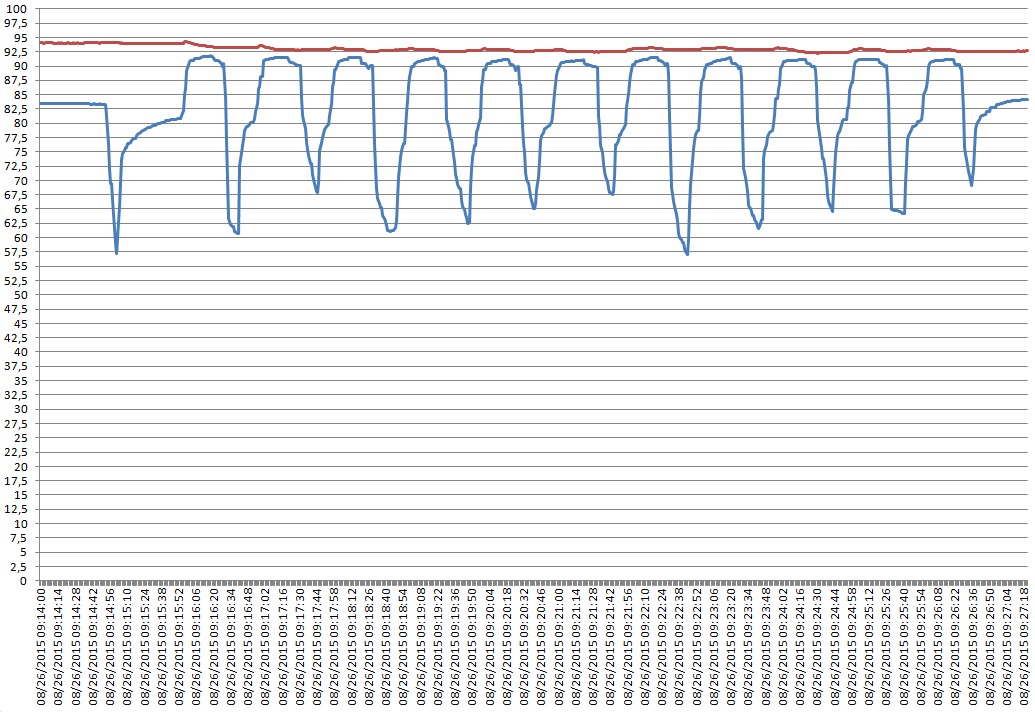
* We used the Scace measuring insert to roughly determine the length of the heat exchanger. We then used our own measuring units to determine the exact length - also taking into account the different flow rates for single and double espresso. Measurements with a Scace measuring insert show different or more irregular measurement curves for series machines.
Here are the filmed measurements (with our own measuring units) of a series machine with 1.1 and 1.2 bar boiler pressure—each with the single and double filter basket.
Despite different flow rates, the references in the measured values are very similar.
The measurements were taken with a separate measuring insert in the coffee grounds.
